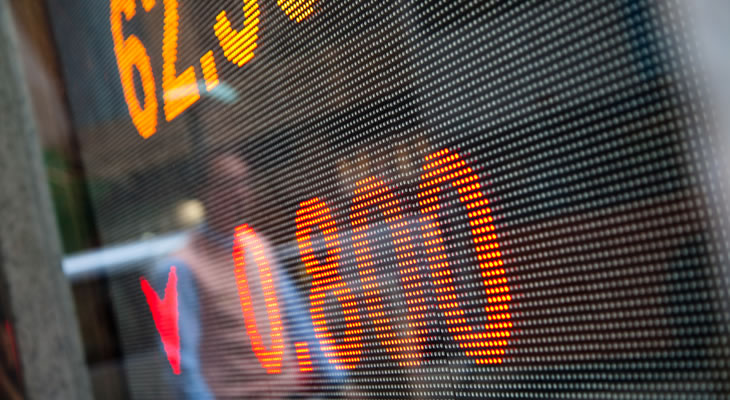Pound to Australian Dollar (GBP/AUD) Firms in Anticipation of Week’s Major Datasets
Despite fading trade jitters, other geopolitical uncertainties prevented the Pound to Australian Dollar (GBP/AUD) exchange rate from falling too much last week with investors awaiting major data before making any big moves on the pair.
Following gains at the beginning at the month, GBP/AUD saw largely narrow trade last week. GBP/AUD opened the week at the level of 1.8354 and closed at 1.8330. The pair dipped to a low of 1.8240 in the middle of the week.
The Australian Dollar (AUD) briefly saw stronger trade earlier in the week due to market hopes that the US and China would rather negotiate trade issues than risk a trade war.
However, later in the week markets became jittery about tensions between Syria and Western nations, including the US. This limited market demand for risk-correlated currencies, while Sterling (GBP) benefitted from Bank of England (BoE) interest rate hike bets.
Pound (GBP) Exchange Rates Firm on Bank of England (BoE) Rate Hike Confidence
Pound trade has been supported in recent weeks by market expectations that the Bank of England (BoE) is preparing to hike UK interest rates as soon as May’s policy decision.
The market’s bullish view has only been slightly limited due to some underwhelming UK data from February and March.
UK industrial and manufacturing production results from February fell short of expectations last week, and NIESR’s UK growth estimate for Q1 2018 came in at a low 0.2%.
Overall though, analysts and investors still think a rate hike is likely and hawkish comments from BoE officials have only added to this confidence.
Brexit uncertainty has taken a backseat in Pound trade over the last month due to expectations that the UK and EU would avoid a ‘hard Brexit’ thanks to a transitional period deal.
Australian Dollar (AUD) Exchange Rate Demand Limited on Market Risk-Aversion
The Australian Dollar was unable to sustain notable gains last week as geopolitical anxiety weighed on the risky currency.
Towards the end of last week, investors became increasingly worried about the possibility of military action escalating between Syria and various Western nations.
Over the weekend, the US, along with the UK and France, led a coordinated missile strike on Syria. While markets currently hope things will not escalate further, this has still weighed heavily on risky currencies like the Australian Dollar.
Last week’s Australian data, however, had little impact on Australian Dollar trade amid all the political developments impacting risk-sentiment.
Pound to Australian Dollar (GBP/AUD) Forecast: Investors Anticipate Major Datasets
The Pound to Australian Dollar (GBP/AUD) exchange rate is likely to be driven by influential UK and Australian ecostats in the coming sessions, as well as the potential for further geopolitical developments, and the release of Chinese data.
As China is Australia’s biggest trade partner, Chinese data and any change in its trade relations with the US have the potential to drive Australian Dollar movement.
Tuesday will see the publication of China’s March retail sales and GDP results, as well as industrial production figures. If these results beat expectations it could boost Australian Dollar demand.
Of course, the Reserve Bank of Australia’s (RBA) latest meeting minutes could influence AUD too if the bank is perceived to have made a shift in tone.
UK and Australian data could be even more influential however. In fact, UK wage and inflation stats have the potential to weaken the Pound outlook if they fall short.
British wage growth stats and inflation data are due for publication on Tuesday and Wednesday respectively. These could influence Bank of England (BoE) interest rate hike bets, with GBP/AUD losses likely if they disappoint.
Australia’s most notable dataset of the week will be March’s job market results, due for publication on Thursday.


Comments are closed.